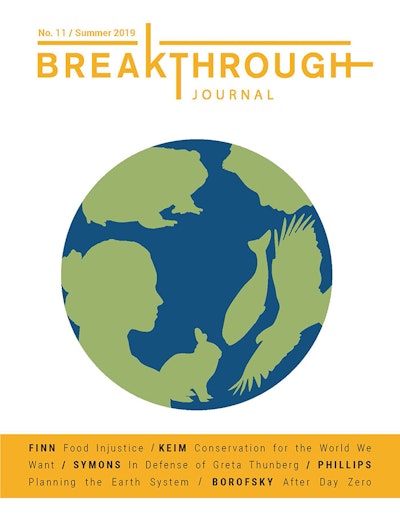Book Review: Fallout
-
-
Share
-
Share via Twitter -
Share via Facebook -
Share via Email
-
Fallout: Disasters, Lies, and the Legacy of the Nuclear Age
by Fred Pearce
Beacon Press, 2018
Fred Pearce has a venerable track record of authoring books that challenge convention on environmental dogma, from overpopulation to invasive species. Yet his latest book, Fallout: Disasters, Lies, and the Legacy of the Nuclear Age, falls disappointingly in the mainstream.
Legacy is the dominant theme throughout the book, as Pearce repeatedly reminds us that the contamination from prominent nuclear sites will be with us for decades or centuries, even if the world eliminates nuclear weapons or phases out nuclear power tomorrow. Unfortunately, it is unclear what Fred Pearce hopes the reader will do with the information he provides, besides become angry and worry more.
While occasionally framed as a prognostication on the future of nuclear energy, the bulk of Pearce’s writing chronicles the numerous atrocities of the nuclear weapons complex, from familiar locations like Hanford in the U.S. and Sellafield in the U.K, to lesser-known events like the Mayak disaster in the USSR. During the Cold War, most countries played fast and loose with occupational and environmental protections in their efforts to build up nuclear arsenals, and the secrecy surrounding such sites often led to long-delayed admission of guilt and a slow commencement of clean-up efforts. Yet Pearce seems to intentionally lump together the legacy of the nuclear weapons complex with commercial nuclear energy, even though the two have operated entirely separately for most of their history, with different actors, regulators, and waste streams.
One would be hard-pressed to argue against the public health impacts of the disasters detailed in this book, but Pearce does his audience a disservice by not including any potential solutions or paths forward. Which countries have done a better job managing the clean-up of weapons or even industrial legacy sites? What does a more equitable process for siting nuclear waste repositories look like? Without touching on these questions, Pearce paints a picture of clean-up efforts so vague the process seems Sisyphean.
With pragmatic solutions lacking, the audience who would ironically gain the most from reading this book are the most ardent pro-nuclear advocates. Pearce plays the role of an honest broker well, in laying out just where the harms from radiation and chemical contamination are legitimate and where they are greatly exaggerated. This might appeal to nuclear proponents, but he also casually dismisses the future potential of advanced nuclear designs and the role of nuclear power in fighting climate change, arguably because of this toxic legacy from the weapons industry. Nuclear advocates may be indignant by such a muddling of nuclear power and nuclear weapons, but Fred Pearce is not an outlier. For a large share of the public, particularly those with strong anti-nuclear views, the history and hubris of nuclear power and nuclear weapons are one and the same. While it may be tempting for nuclear advocates to dismiss Pearce’s argument as irrelevant for the future of clean energy, by genuinely understanding and engaging with the darkest episodes in nuclear’s history, Pearce offers nuclear advocates opportunity to gain the humility necessary to advance a just and sustainable future for nuclear power.


